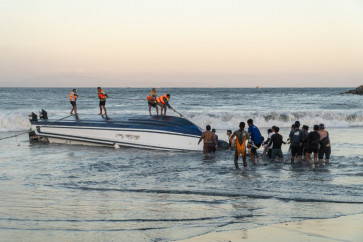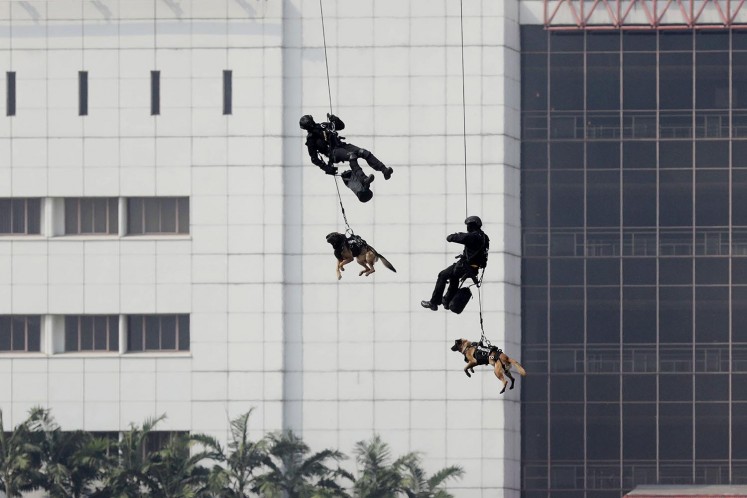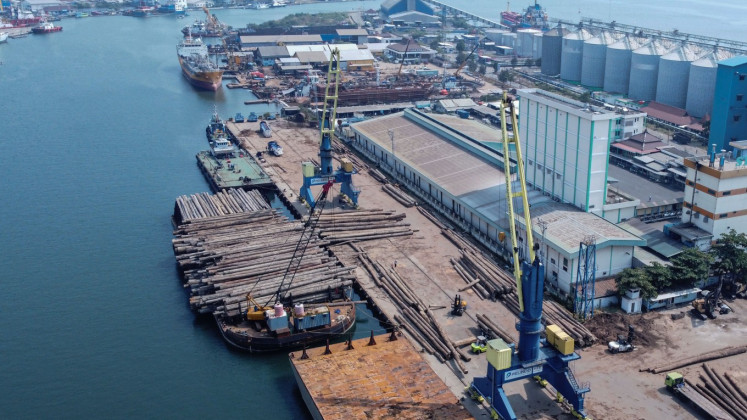Popular Reads
Top Results
Can't find what you're looking for?
View all search resultsPopular Reads
Top Results
Can't find what you're looking for?
View all search resultsTransjakarta’s passengers demand safe rides
Having limited options in public transportation has forced most Jakartans to rely heavily on either the Transjakarta busway network or commuter trains
Change text size
Gift Premium Articles
to Anyone
H
aving limited options in public transportation has forced most Jakartans to rely heavily on either the Transjakarta busway network or commuter trains.
However, a limited fleet often makes headway too long or a technical glitch disrupts the operation of these two transportation modes.
On Wednesday, a gasoline-powered Transjakarta bus plying Corridor I from Blok M in South Jakarta to Kota in West Jakarta emitted smoke at about 8 p.m. near the Hotel Indonesia traffic circle in the heart of the capital.
The incident allegedly happened as a result of a failure in the bus’ cooling system.
The fan belt, which drives the cooling fan in the engine, stopped working, Transjakarta spokesperson Wibowo explained to The Jakarta Post on Thursday.
The incident was enough to make Transjakarta passengers worry about their safety while riding buses.
One passenger, Rizky Fitria, 26, said she was shocked upon seeing an Instagram post showing smoke billowing out of a Transjakarta bus on Wednesday night.
“I never thought such an incident could happen,” said the graphic designer, who regularly takes Transjakarta buses from her workplace in Kedoya, West Jakarta, to her home in Bekasi, West Java.
“I hope the company regularly checks its buses to prevent similar incidents from happening,” she added. Rizky said she would continue to use Transjakarta buses because of their wide coverage area and low fare.
Transjakarta charges Rp 3,500 (US 25 cents) per trip.
Another regular Transjakarta passenger named Rinaldy, 29, said he was not surprised by the incident because worse incidents had happened in the past.
Before Wednesday’s incident, the engines of at least four Transjakarta exploded in the last three years. Most of the incidents involved red buses produced by Chinese bus manufacturer Zhongtong Bus company on Transjakarta Corridor I serving Blok M-Kota and Corridor IX serving Pinang Ranti in East Jakarta-Pluit in North Jakarta.
The freelance writer, who most of the time takes Transjakarta buses to travel to the city, urged the bus operator to guarantee the safety of passengers and learn from previous incidents.
“In addition to regular maintenance checks, every bus should be checked every day before being operated,” he said. “If such incidents keep happening, Transjakarta’s passengers will think twice about taking the bus.”
As Transjakarta has expanded its services since it commenced operations in 2004, like increasing its fleet to 13,000 buses and its routes to 128 on 13 corridors, the company has seen its passengers grow to about half of million per day.
Transjakarta hopes to attract 1 million passengers a day this year. To anticipate this, the company started on Monday the operation of a new route from Palmerah, West Jakarta, to the Senayan traffic circle, Central Jakarta.
Transjakarta said that following Wednesday’s incident it would carefully inspect its 13,000 buses before they were operated.










